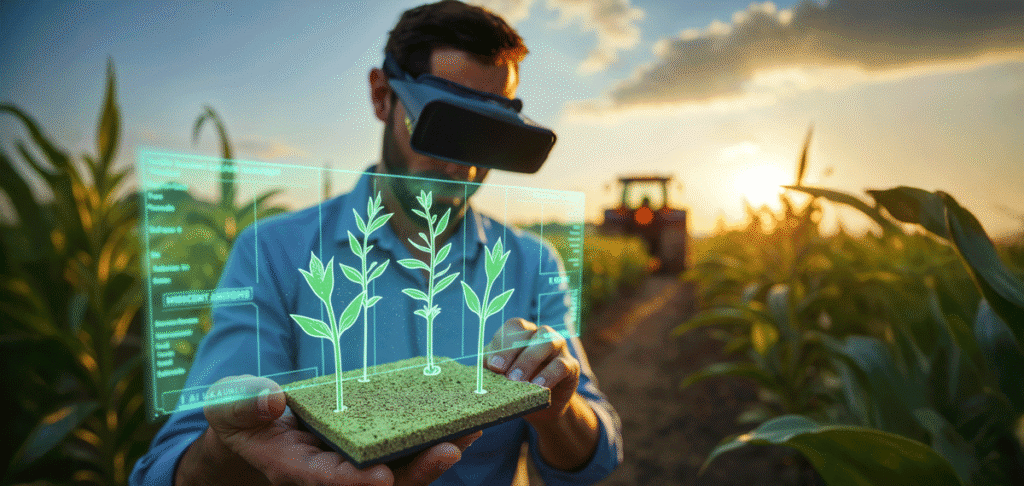
Harvesting Innovation: The Evolving Role of IT in Agriculture
From drones soaring over crop fields to satellites mapping soil quality, IT in agriculture has shifted from supplementary to foundational. In today’s climate-sensitive and data-rich world, this fusion of technology and farming is helping producers work smarter, conserve resources, and build more resilient food systems.
GEO Practices: Grounded Intelligence Through IT in Agriculture
One area where IT in agriculture stands out is through GEO practices – Geospatial Earth Observations. By leveraging satellite imagery and remote sensing, GEO tools give farmers a bird’s-eye view of operations, allowing them to anticipate challenges and manage resources more effectively.
Organisations like GEOGLAM and AfriGEO provide essential insights into vegetation patterns, weather shifts, and water usage. This helps agricultural teams make informed decisions about irrigation, planting schedules, and crop rotation – all backed by real-time data.
Whether it’s identifying early signs of drought or mapping carbon retention in soils, these applications show how IT in agriculture strengthens farming at every level.
Precision and Predictability: The Power of IT in Agriculture
The fusion of computing and farming is most evident in precision agriculture. Using GPS-enabled machinery, drones, and cloud analytics, IT in agriculture allows growers to target resources with pinpoint accuracy.
Need to know where the soil’s too acidic or too dry? Smart sensors can provide instant feedback. Fertiliser, water, and pest control are applied precisely where needed, reducing waste and improving yields.
This precision supports sustainability efforts too – giving farmers the tools to conserve resources while protecting biodiversity. It’s another way IT in agriculture is driving smarter, more responsible farming.
Supporting Smallholders and Scaling Impact
While large commercial farms often take the spotlight, smaller producers benefit greatly from the integration of IT in agriculture. Mobile apps, cloud-based platforms, and affordable software now enable farmers in rural areas to track market prices, manage finances, and access weather predictions.
This democratises access to tools that were once out of reach, offering pathways to better planning, informed risk-taking, and improved income stability.
Smarter Use of Water and Soil
Water and soil are two of the most vital – and fragile – resources in farming. Digital systems powered by IT in agriculture offer smart irrigation solutions that conserve water without compromising crop quality.
By analysing data from moisture sensors and geo-mapping tools, farmers can apply water only where and when it’s needed. Similarly, soil monitoring platforms help detect nutrient deficiencies and erosion patterns, leading to healthier long-term land management.
Belgium Campus: Educating Tomorrow’s Tech Farmers
As technology continues to transform farming practices, the demand for skilled professionals rises. That’s where Belgium Campus iTversity comes in. With qualifications in Software Development, Data Science, Information Technology and and Infrastructure, students graduate with the tools to build real-world solutions for modern agriculture.
From designing apps for crop analytics to building platforms for remote monitoring, learners gain hands-on experience in practical applications of IT in agriculture. Career paths include:
- Precision farming technologists
- GEO systems analysts
- Data scientists for agri-tech firms
- Software engineers focused on farming innovation
Belgium Campus iTversity also collaborates with industry partners to offer mentorship, internships, and job placement support, ensuring students are ready to make a meaningful impact in this evolving field.
Transforming Food Systems with IT in Agriculture
Beyond the soil and field, IT in agriculture improves efficiency throughout food supply chains. Blockchain technologies enhance traceability, helping consumers understand the origin of products. IoT sensors keep track of freshness in transport, while cloud platforms coordinate delivery logistics in real time.
These tools increase transparency, minimise waste, and strengthen food security by keeping systems agile and accountable.
Future Growth with Intelligence at the Helm
Climate instability and population growth present massive challenges for food producers. But by integrating digital tools into every layer of production, IT in agriculture is offering proactive solutions – from AI-powered crop forecasting to automated field operations.
The ability to adapt, scale, and innovate will define success in the coming decades. Thanks to institutions like Belgium Campus and widespread adoption of GEO practices, the next generation of farmers and technologists are prepared to lead the change.
- Phillip Crafford


